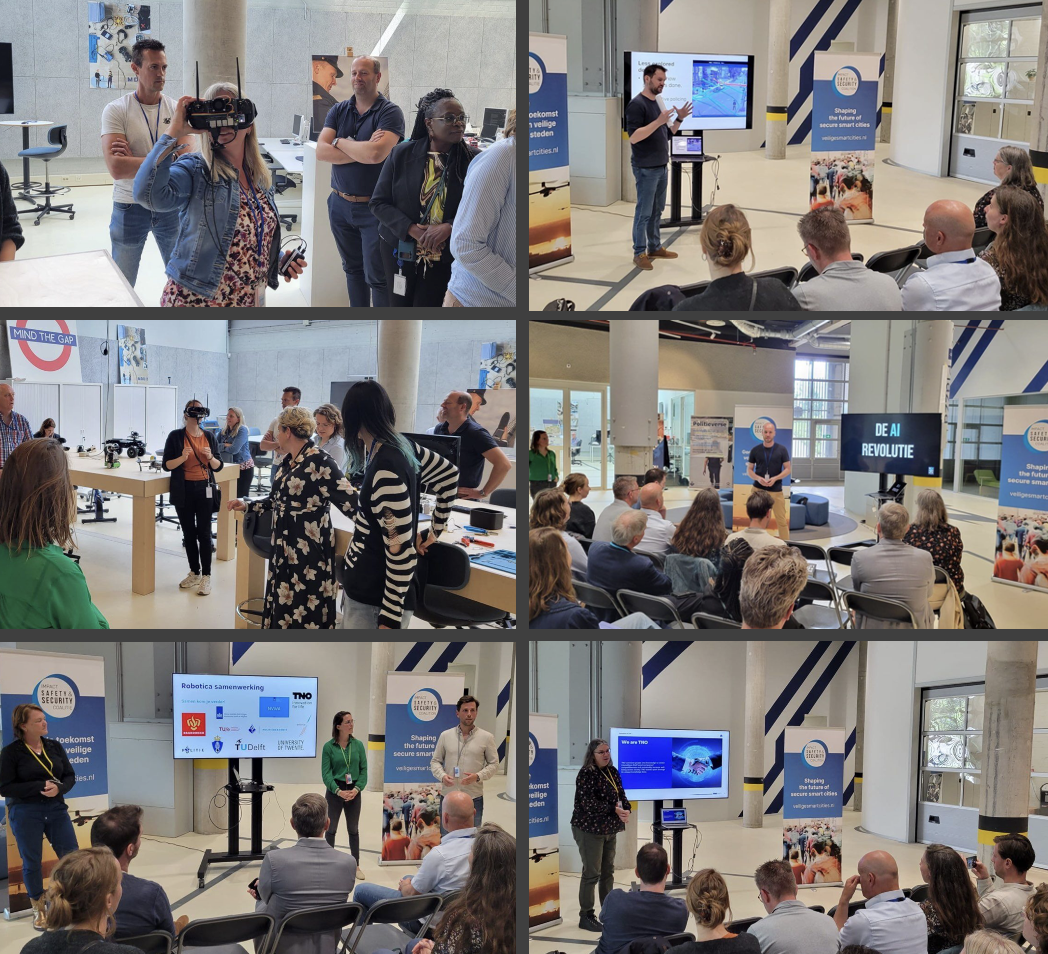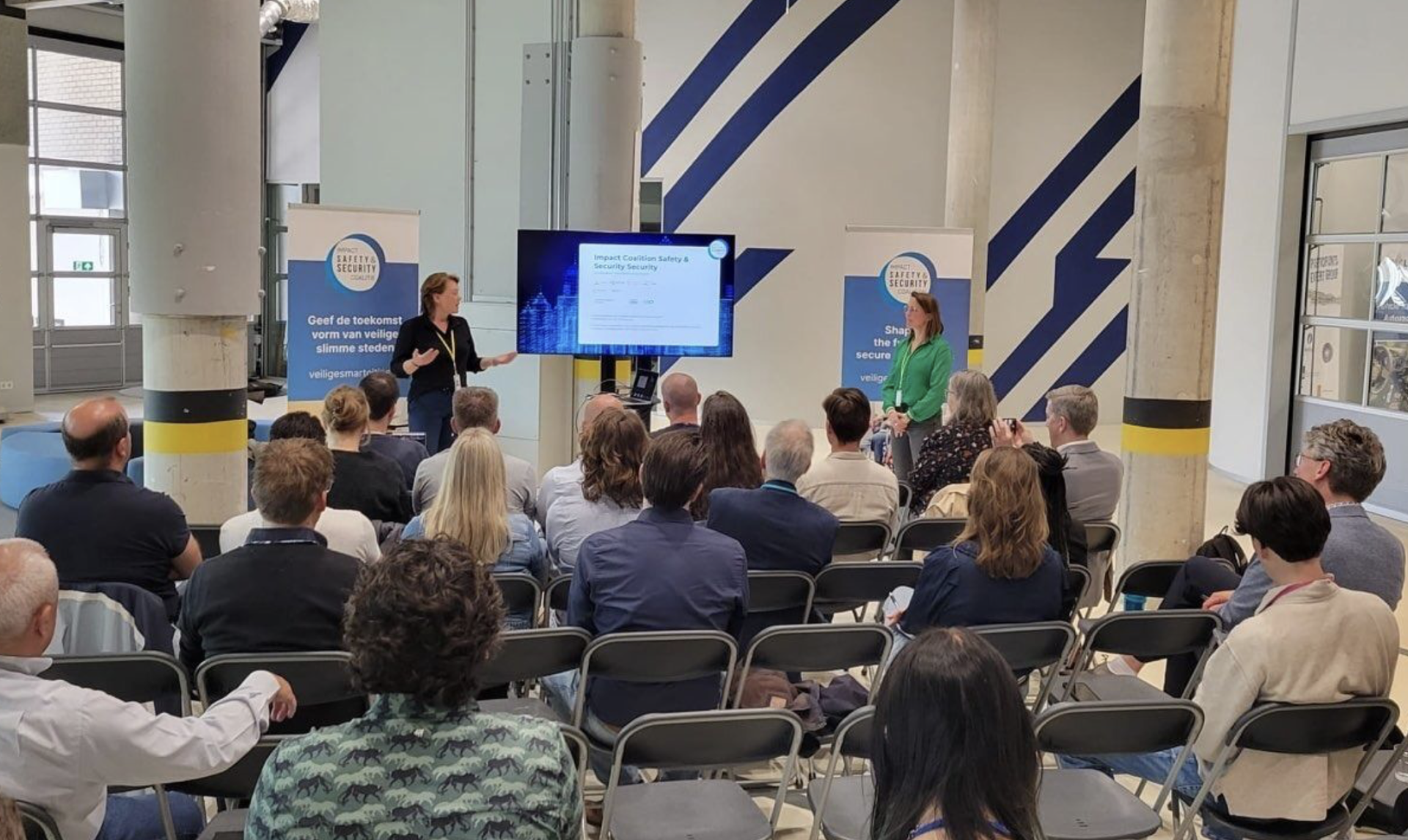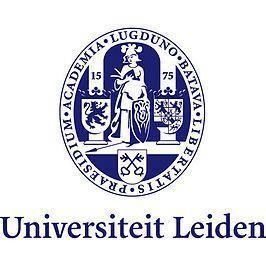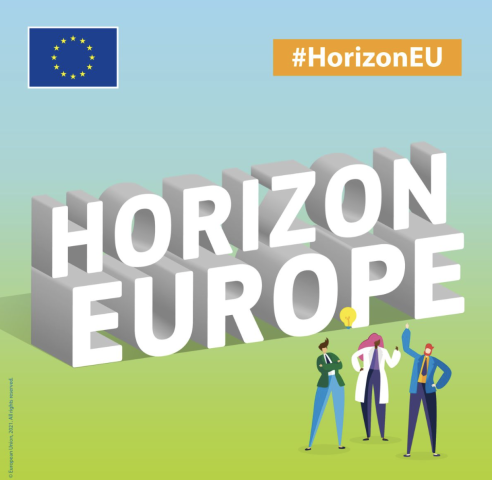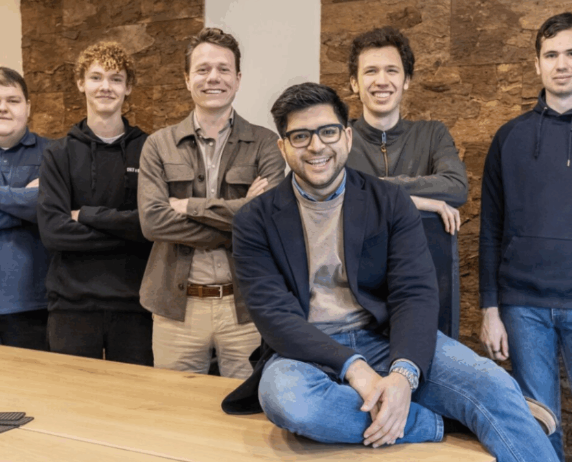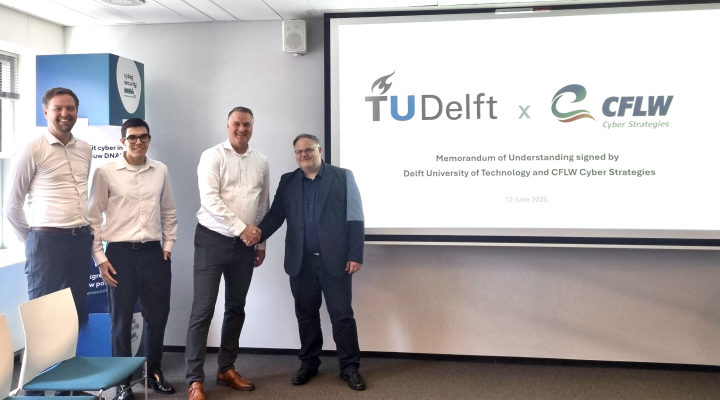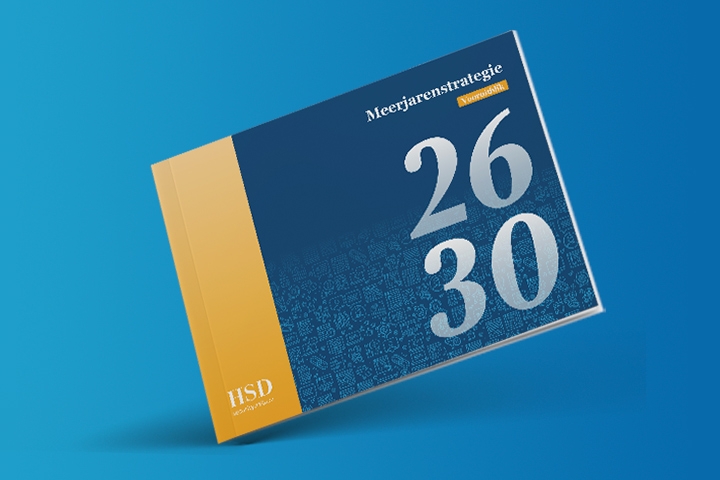Recap: AI & Robotics Live Community Event
When you think of AI and robotics, you might imagine robots from movies like the Terminator, or practical devices like smart vacuum cleaners and automatic lawnmowers. The concept of a flying robotic insect, similar to a hornet and equipped with a camera, captures the imagination, but is it practical and desirable?
On Tuesday 28 May, the AI & Robotics Community event took place. An inspiring event organised by Impact Coalitie Safety & Security to educate people from police and municipalities on the impact of AI and robotics in the safety domain.
Maarten Sukel, Francesco Ragazzi, Judith van Dijk, and Paul Otte took the audience through AI and Robotics debates and innovations, showing them how these developments are not only changing the daily routines but also how people work, learn and communicate. While advances in AI and robotics offer impressive new opportunities, they also raise important ethical and societal questions, such as the impact on employment and privacy. This highlights the need for responsible and transparent use of these pioneering technologies.
Maarten Sukel, the author of the book ‘The AI Revolution’, offered a comprehensive overview of what AI is and how it can be used. He questions whether the use of AI is always necessary, as in detecting rubbish on the street with a camera - something we can also see for ourselves. He stresses that machine learning should be approached carefully, similar to cooking: the ingredients you use are crucial to the result. He also warns of new forms of fraud, such as fake phone calls using generative AI, which could become the successor to WhatsApp fraud.
Francesco Ragazzi of Leiden University indicated that the public debate often misses some crucial points about AI; predictive policing transforms police work and thus the organisation itself; video summarisation can recognise movements by patterns, but lacks the context of individual actors; more and more AI applications are outsourced, leading to less insight into the trade-offs and underlying data of the models; and finally, using AI consumes a lot of energy, while the world demands more sustainable lifestyles
Judith van Dijk explained that TNO is currently working on making robots more autonomous. They do this by giving the robot a ‘backpack’ with various sensors. Furthermore, the robot can signal the control centre when it encounters a door, for example. A human can then remotely control, for example, the arm of the robot to open the door. But remember, unmanned systems do not necessarily mean work for fewer people!
Paul Otte and his colleagues from the Dutch police robotics lab introduced people to Robot Dog Spot, but also to the camera that can recognise holding and calling a mobile phone in the car and is now being used in other European countries, to developments to explore unfamiliar spaces where a robot can not only relay images, but also detect toxic air, and innovations in the field of explosives recognition and dismantling by robots.
Impact Coalition Safety & Security (ICSS)
The event was organised by the Impact Coalition Safety & Security: a collaboration between municipalities, police, knowledge institutions, companies, VNG and HSD Office. Want to know more about ICSS, this meeting, or other ICSS activities? Visit: Veilige Smart Cities
